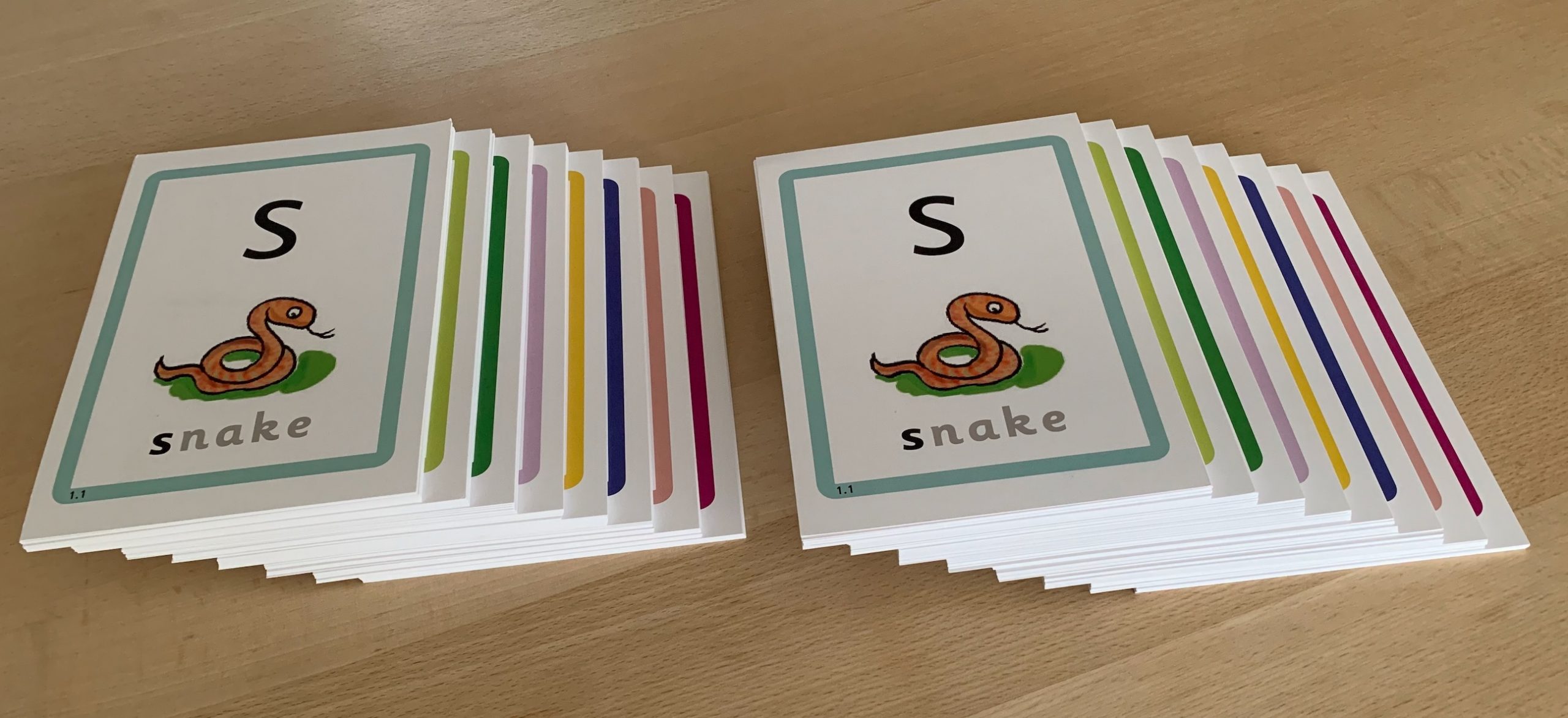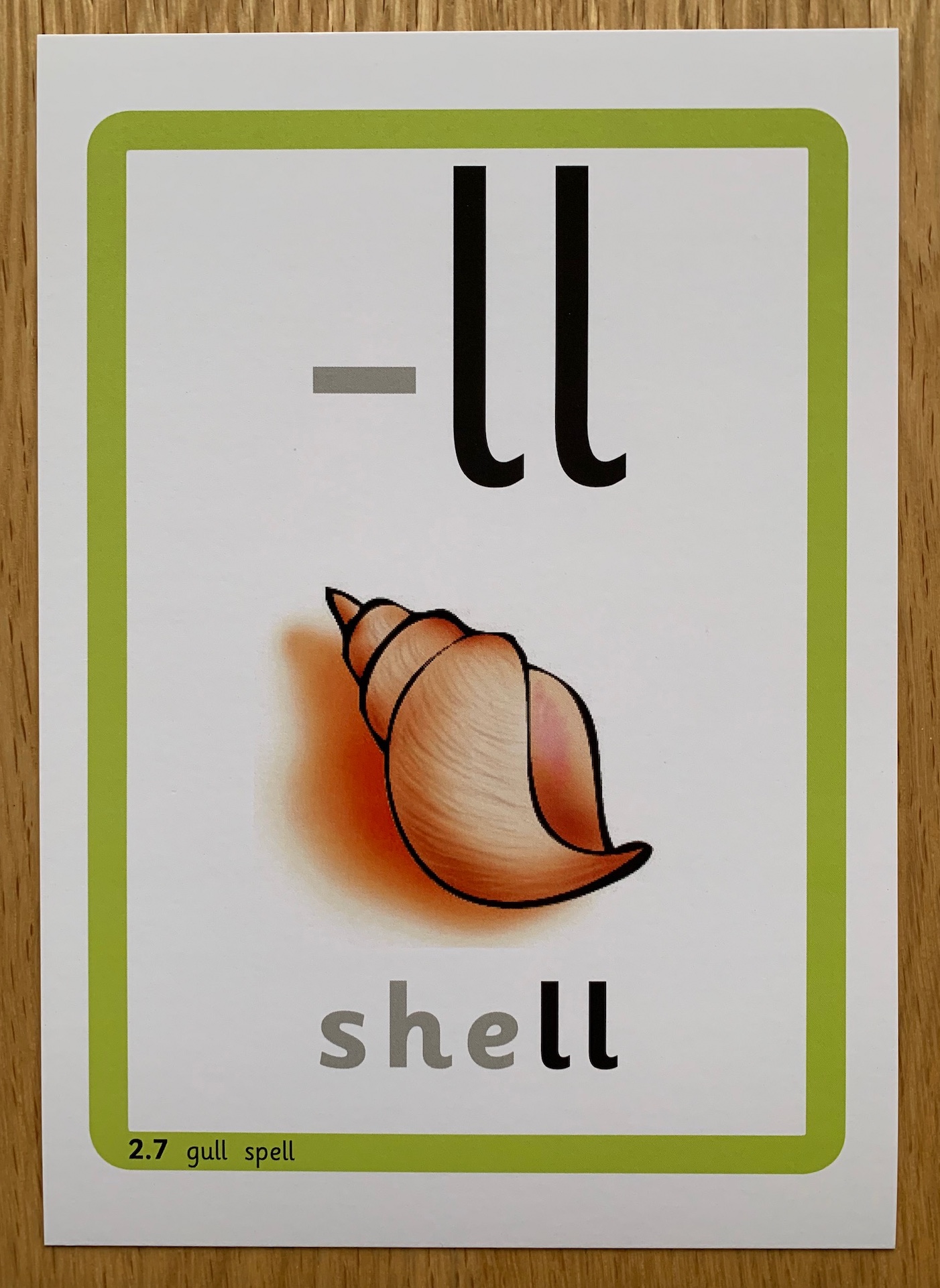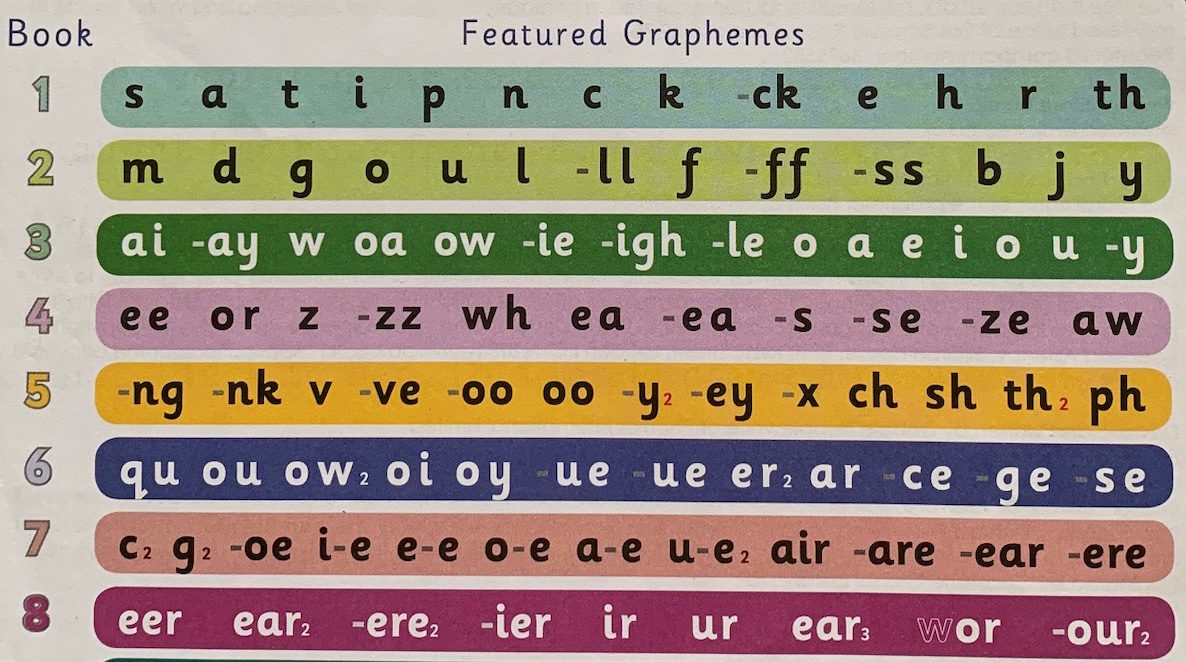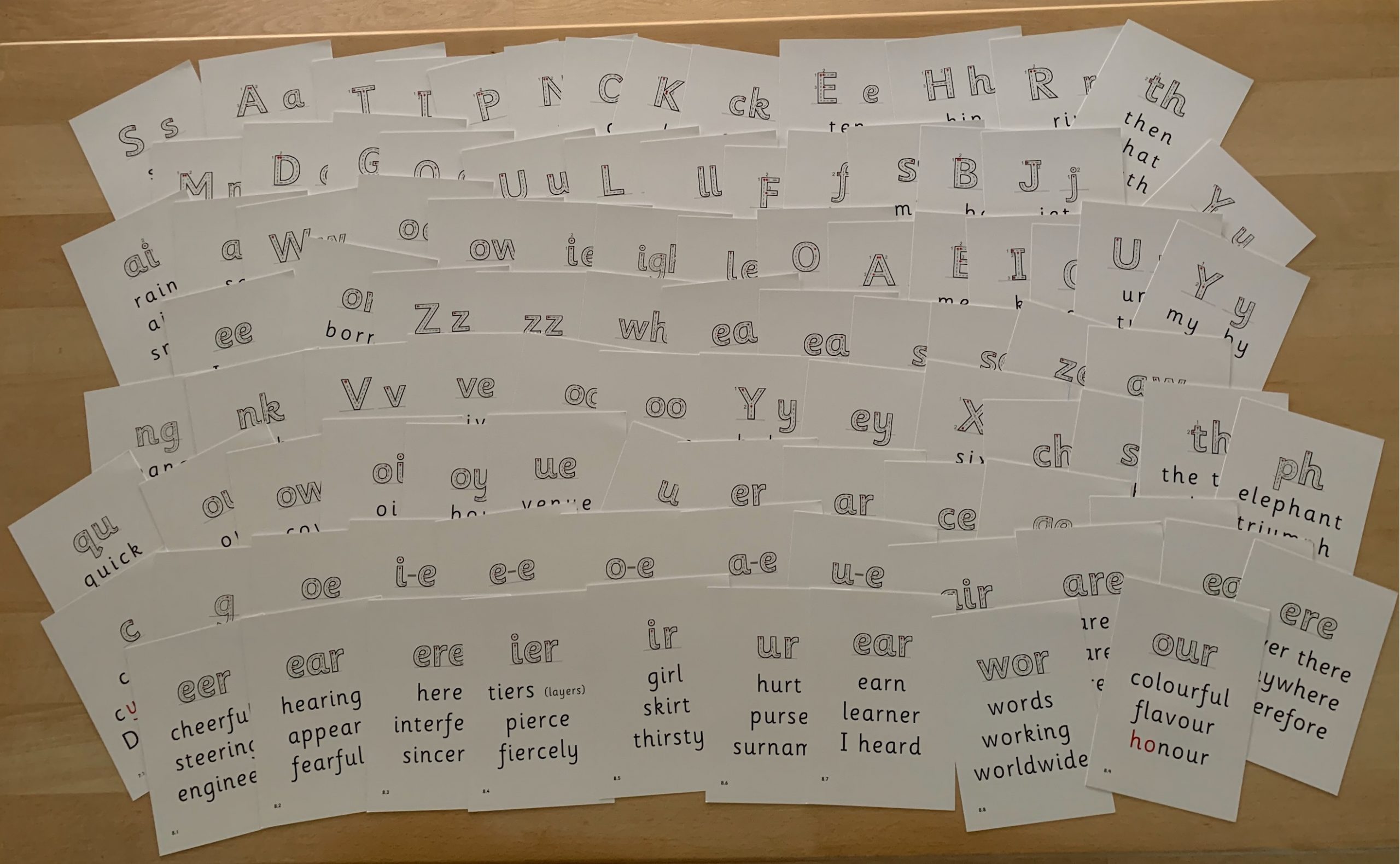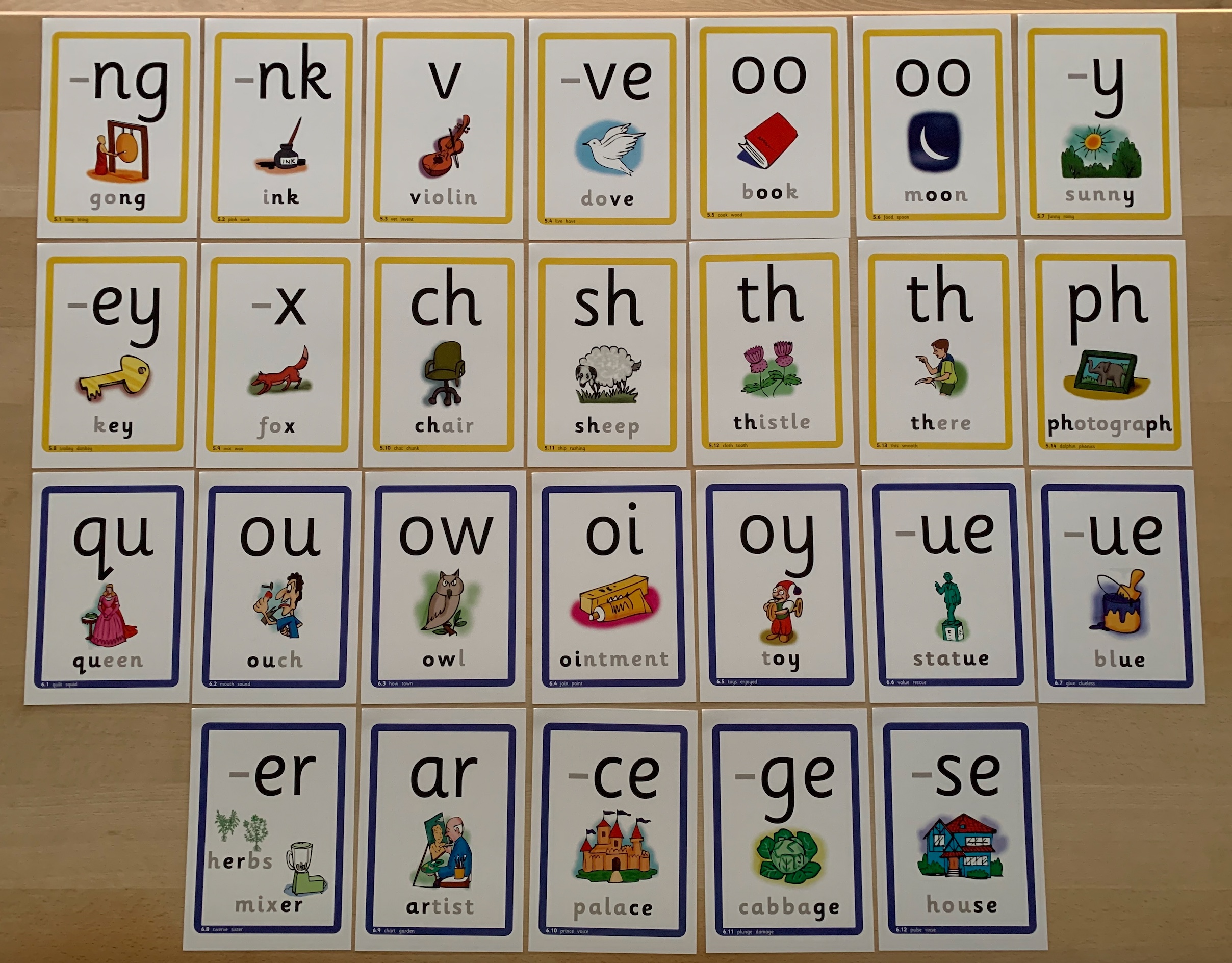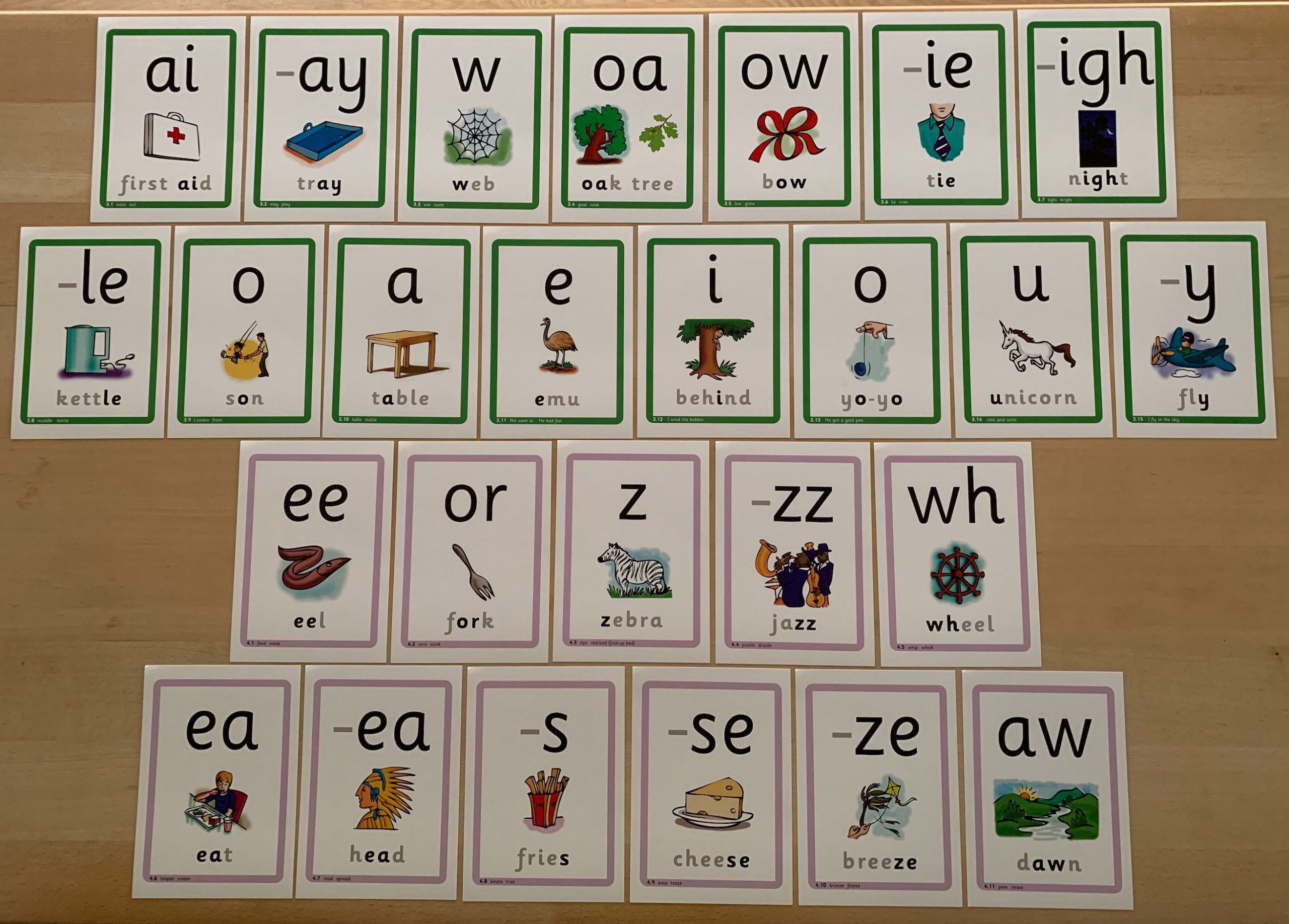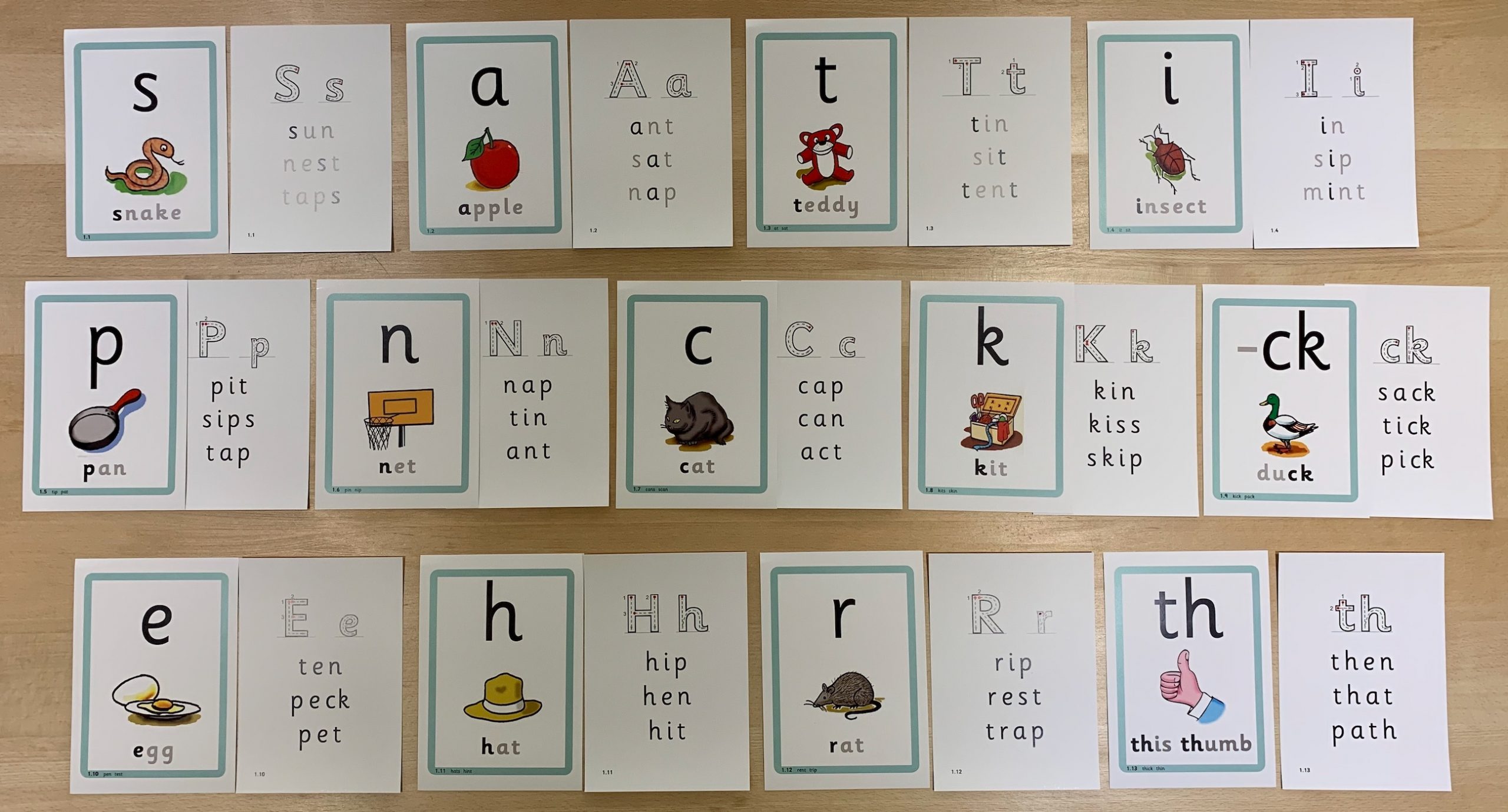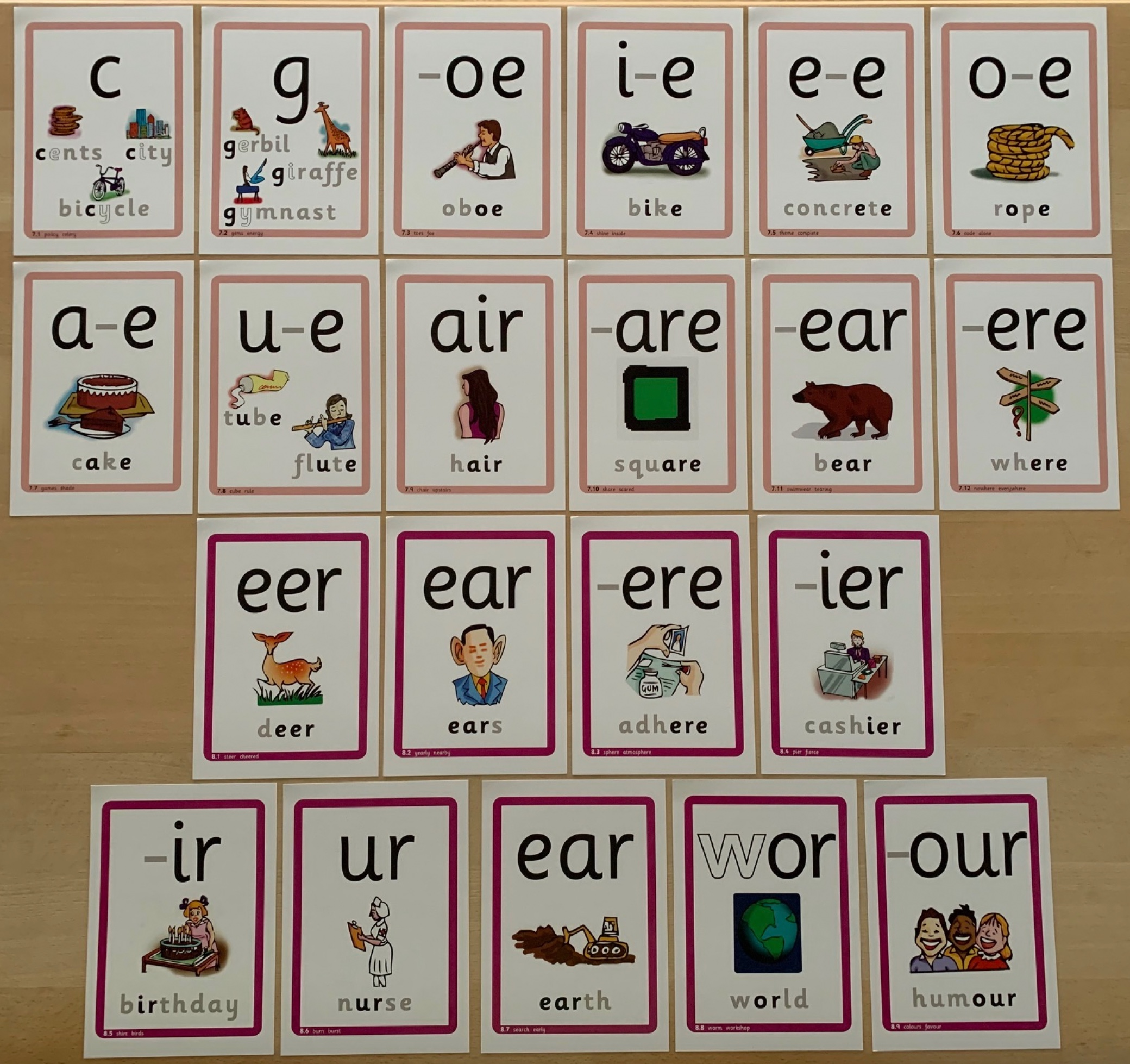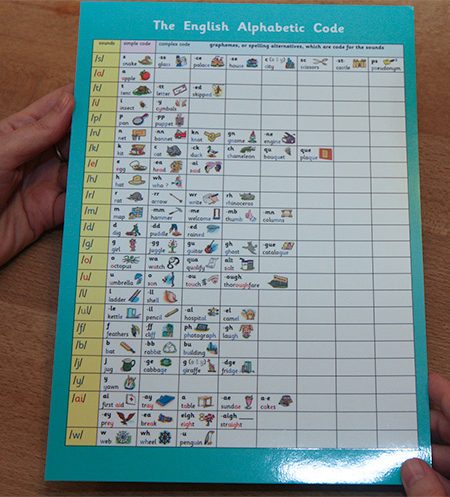
A5 Flash Cards (1 pack)
2nd December 2020
Alphabet Tabletop Chart (A4 – pack 10)
2nd December 2020A5 Flash Cards (2 packs)
£44.00 plus VAT (if applicable)
The 99 flashcards ‘chunk’ the letter/-sound correspondences of the alphabetic code into 8 sub-sets with different coloured borders.
Each sub-set has sequential numbering on every flashcard to ease systematic management.
The colour coding of the 99 flashcards is a match for Pupil Books 1 to 8. Book 9 has printable Frieze Cards.
For Full Information and Printable Guidance – Click HERE
Printable Guidance – 2 x page PDF – Click HERE
Size and card type:
The flashcards are A5 (approx 21cm x 15cm).
The cards are 350gsm with a silk finish.
Organising and sequencing:
The 99 flashcards ‘chunk’ the letter/-sound correspondences of the alphabetic code into 8 sub-sets with different coloured borders.
Each sub-set has sequential numbering on every flashcard to ease systematic management.
The colour coding of the 99 flashcards is a match for Pupil Books 1 to 8. Book 9 has printable Frieze Cards.
Purpose:
The flashcards are really practical for supporting teacher-modelling when introducing the new or focus letter/s-sound correspondence. The featured code is then immediately applied to the three large printed words on each card to model reading. Two words are provided in small-scale font to say aloud to model spelling.
Teaching and learning tip for use in schools:
It’s a great idea to have two parallel sets so that when each letter/s-sound correspondence is introduced in the main phonics lesson with the ‘teacher’s flashcards’, add the focus card from a parallel set to build up the ‘children’s set of flashcards’ for their free-play and ‘continuous provision’ opportunities. This raises the likelihood of extra practice and fully embedded learning.
Reading:
Decoding for reading is a print-to-sound process. Three cumulative, decodable printed words are provided on the reverse side of each card so that the teacher can model sounding out and blending. Children can join in with the teacher to sound out and blend these words, when able, and they can increase their own practice if provided with their own set of cards to play with. (Note: The printed words on the first four cards ‘s’ ‘a’ ‘t’ ‘i’ are not decodable but show the focus grapheme in different positions in the printed words.)
Spelling:
Encoding for spelling is a sound-to-print process. Two printed words in tiny font are provided in the bottom border for the teacher to say these words aloud, very slowly and naturally, to model oral segmenting – that is, split the spoken word up into its constituent sounds from beginning to end and tally on to the thumb and fingers of the left hand, palm facing the teacher. Write long ‘sound dashes’ for each identified sound top left of the teacher’s board, then model how to write the graphemes (letters and letter groups) for each sound using the ‘sound dashes’ as writing lines for correct letter formation. Check the spelling by sounding out and blending.
Mnemonic (aid to memory) key picture-words:
Every new or focus grapheme of the alphabetic code is in large font with an example key picture and printed word.
A grapheme is a letter or letter group that is code for a featured sound. The key picture-words on the flashcards are included on Debbie’s free printable/projectable Giant and Mini tabletop Alphabetic Code Charts at:
| Weight | 2.06 kg |
|---|

